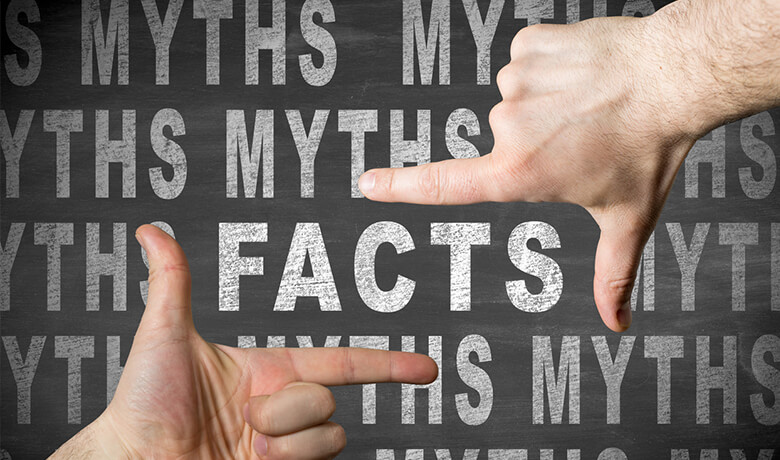Get news, updates, and insights delivered straight to your inbox.
5 of the Most Common Myths About Marketing Asset Management

“Busting the 5 Myths About Marketing Asset Management, DAM, and Project Management.”
It’s never been more important to understand how best to manage our marketing assets within our business and across a distributed network of partners. The #1 reason companies struggle with multi-channel communications is poor content management.
Marketing Asset Management (MAM) has emerged as a set of tools and processes to help companies control their brand assets effectively. But there is still confusion and misinformation about the role and impact of this category.
Here are 5 of the most common myths about marketing asset management technology. For more, read our full eBook, “Busting the 5 Myths About Marketing Asset Management, DAM, and Project Management.”
Myth #1: Marketing Asset Management software does the same things as digital asset management (DAM), enterprise content management, and project management software.
DAM, ECM, Project Management, OMG! The truth is, each of these asset management solutions have very different use cases at different stages of a print or digital asset’s lifecycle. Let’s look at the differences between the various types of asset management software available to you:
Marketing • Asset • Management (MAM) (n): The use of a central repository to customize, organize, and distribute finished sales and marketing content to both offline and online channels. Includes workflows, dynamic and locked content, integrations, security controls, and measurement.
Digital • Asset • Management (DAM) (n): Software used to organize, store, and retrieve rich media and digital assets such as photos, music, and other multimedia content. Related: Digital Media Asset Management
Enterprise • Content • Management (n): A set of defined processes that allow companies to obtain, organize, store, and deliver information crucial to its companywide operation in the most effective manner possible. Includes rules and workflows related to document and records management, content taxonomies, auditing capabilities, and security mechanisms.
Project • Management (n): The application of processes, methods, knowledge, skills and experience to achieve project objectives. Includes collaboration, versioning, approvals, and editing workflows.
Myth #2: Marketing Asset Management is just about storing / accessing files.
File storage and retrieval is only one component of Marketing Asset Management. This type of software is designed for the needs of a distributed sales and marketing organization.
Marketing asset management software provides the ability to maintain a consistent brand look and unified experience across branded content, while allowing field offices and employees to localize and personalize content assets within approved workflows.
Additionally, from within a marketing asset management system, print and digital assets can be distributed across online and offline channels (and this distribution and usage can be measured and reported on.)
Myth #3: Only marketers care about Marketing Asset Management.
Marketing Asset Management has far-reaching implications across the business. When executed correctly, it drives consistency in every brand interaction a customer has with your company, no matter what the channel.
This consistency leads to a stellar customer experience, the most important driver of business success. By the year 2020, customer experience will overtake price and product as a key brand differentiator.
A marketing asset management tool also directly improves the productivity and effectiveness of field sales, distributed channel partner networks, franchise owners, and global locations working in regional markets. All are impacted by the ability to find what they need when they need it, and customize print and digital assets to suit their particular needs. And when they can do so on-brand, they contribute this goal of overall brand consistency.
Myth #4: My industry doesn’t need Marketing Asset Management.
In highly regulated industries, such as pharmaceutical, healthcare, and financial services, outdated regulatory data can be inadvertently shared with improper marketing asset management. An appropriate system gives corporate marketers piece of mind when it comes to compliance.
At MarcomCentral, we have found particular verticals where a robust Marketing Asset Management system saves organizations from costly risks.
Companies in the following industries can really benefit from a premier brand asset management system:
- Financial Services
- Manufacturing
- Retail/franchise
- Education
- Nonprofits & Associations
- Travel
Read more in our blog post, “Why These 6 Industries Rely on Marketing Asset Management.”
Myth #5: Marketing Asset Management is a “nice-to-have” not a “need to have”.
As discussed, off-brand assets affect brand compliance and degrade the sales and customer experience process. Poor Marketing Asset Management leaves behind a very tangible, financial impact. Just think about the average hourly salary (and efficiency) that is wasted when workers spend their time, on average up to 8.8 hours every week, just searching for the right information.
With a marketing asset management technology properly implemented, marketers spend less time searching for files, or recreating lost assets. Remember, that’s equivalent to 52 working days each year spent completing this task. What would that cost add up to in your organization?
“Best-in-Class marketing organizations are far more likely to leverage content and associated technologies to speed time to market and increase the function’s contribution to sales forecasted pipeline.” – Aberdeen Group
It’s due time to dispel the myths and clarify the differences between Project Management, Digital Asset Management, Enterprise Content Management and Marketing Asset Management to help businesses make informed decisions about the ways in which they control their brand across channels, and throughout their large, distributed workforce and partner networks.
Read more in our full eBook, “Busting the 5 Myths About Marketing Asset Management, DAM, and Project Management.”
What is MarcomCentral?
MarcomCentral is a marketing asset management solution that manages and customizes marketing content across your entire organization. Using MarcomCentral, employees and marketers can access and create marketing assets whenever they need to!
Additionally, marketing managers and executives can ensure brand integrity by overseeing how marketing assets are being used in the field. Not only does this maintain brand consistency, but it protects your brand from rogue marketing strategies.
You might also like


